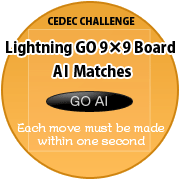TOP![]() Sessions
Sessions![]()
![]() Programming
Programming![]() This Session
This Session
Adding Advanced Shader Features and Handling Fragmentation: How to Enable Your Graphics Application on all OpenGL ES Devices using POWERVR
- Date
- September 2 (Thu) 16:30 - 17:30
- Format
- Session (60min.)
Expected Skill | Persons with experience in GPU programming |
|---|---|
Ideas Take Away | Techniques and source code for quickly deploying advanced OpenGL-ES graphics applications across multiple devices and Operating Systems. |
The number of OpenGL ES 1.1 and/or OpenGL ES 2.0 enabled devices is increasing rapidly across multiple Operating Systems. This presentation will introduce mechanisms for quick and easy porting of hardware accelerated graphics applications across these devices efficiently dealing with variable screen resolution, feature-sets, performance and user interaction fragmentation. This presentation also introduces an open-source Shell Abstraction Framework as a practical solution.
This session will highlight that the opportunities for handheld gaming stretches beyond just the iPhone offering quick and open solutions to target the graphics capabilities of a very wide range of devices from major vendors worldwide and over 60 different platform configurations from multiple OSes including MAC OSX, Linux, Symbian, Android, WinCE and XP/Vista as well as multiple platforms and devices including Apple iPhone 3G/3GS/iPAD, Sony Ericsson Satio, Samsung i8910, NTT DoCoMo FOMA and many more.
Session structure will start with a brief top level overview of the Shell abstraction framework digging into a practical example quickly developing, debugging, building and tuning on PC and showing the quick porting abilities to a mobile device by recompiling and linking to the correct Shell framework .
It will highlight the benefits of developing on PC using VFrame emulation in combination with a Shell framework which abstracts all OS and Platform specific functionality. How the Shell framework abstracts all OS specific functionality including: timer functions, user controls, window and context creation as well as device capabilities and features such as: screen size and orientation, fixed point versus floating point as well as file system limitations. How a Shell framework has successfully been used in commercial environments as well as more advanced middleware solutions offered such as IdeaWorks3D Airplay and Futuremark Kanzi solutions. Using the combination of the Shell framework with the tools and utility library to enable cross platform deployment of games and deployment into all the major applications stores with minimal effort on device specifics -- allowing developers to concentrate on platform independent graphics code.
Will include presentation, video and/or live demonstration of application running across multiple devices, sample code available online and distributed on DVD at event ? including a full example Shell Abstraction Framework
![]()
* The session contents are based on the information provided by the speakers.
-

Gordon MacLachlan
Technology Lead for Documentation and Training
POWERVR Developer Technology team
Imagination Technologies
Gordon MacLachlan is Technology Lead for Documentation and Training as part of the POWERVR Developer Technology team at Imagination. He has long experience in computer graphics dating from 8bit Atari days, through a Masters at the University of Dundee and his current role, working with developers, liaising with companies and academic institutions and writing example code and utility applications for mobile development at the cutting edge of mobile graphics hardware. His recent engineering projects include the creation of a fully featured, freely distributable, example rendering engine using the OpenGL ES 2.0 API, development of the POWERVR SDK for iPhone, work on PVRTC texture compression and he is responsible for the continued maintenance of PVRTexTool, Imagination’s in-house texture optimisation software.



